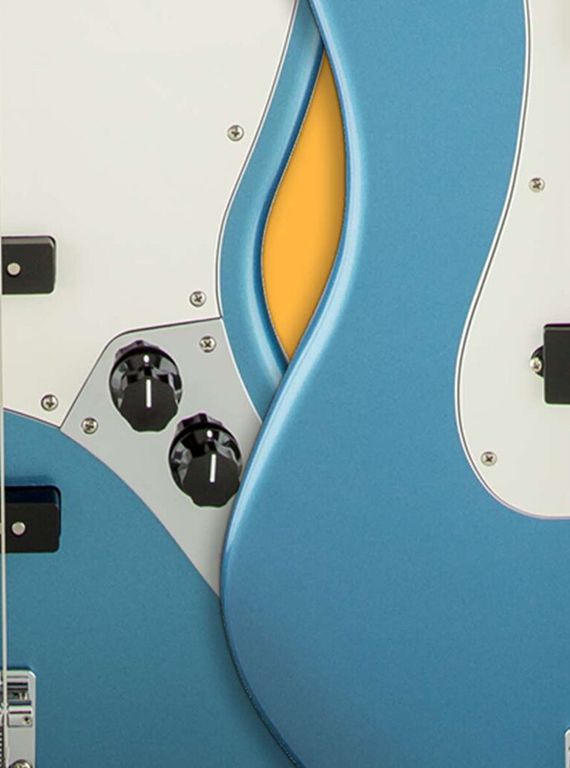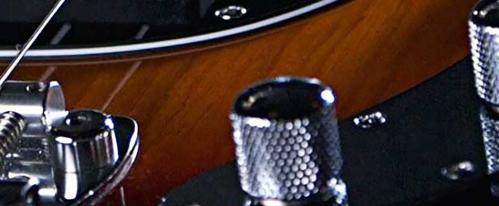WE LOOK AT THE DIFFERENCES BETWEEN THE FENDER PRECISION BASS AND THE FENDER JAZZ BASS, SO YOU CAN MAKE THE RIGHT CHOICE FOR YOUR SOUND
So, you’re wondering what the difference between the Jazz Bass and The Fender Precision 'P' Bass really boil down to, right?
Good job you’ve landed here as we discuss the differences, from the subtle to the downright contrasting, between the classic Fender P Bass and The Fender Jazz bass. Hopefully, this will help you choose the perfect option for your sonic needs.
WHAT ARE THE MAIN DIFFERENCES BETWEEN THE FENDER PRECISION & THE FENDER JAZZ BASS?
There are 3 main differences between the Fender P Bass and The Fender Jazz, and in summary it boils down to shape, neck width and pickups:
- The body shape is different as the Jazz bass has an offset body style. The P bass is similar to a Stratocaster with its double cutaway.
- The Precision bass neck is thicker at the nut (around 43mm) whereas the Jazz tapers towards the nut (38mm).
- The P Bass features a hum cancelling split coil pickup. The Jazz bass features dual single coil pickups.
That’s basically it in a nutshell, but read on for a little more information and background to the differences between the P bass and Jazz bass.
DIFFERENCES IN BODY SHAPE BETWEEN THE JAZZ BASS & P BASS
The Fender 'P' Bass body is very different from the Jazz bass.
The 'P' bass first hit the music scene back in 1951 and was created to give upright bass players the option to go electric.
It also opened up the world of bass to a whole new generation of would-be players.
The double-cutaway design is reminiscent of a Stratocaster shape.
The 'P' bass was originally a single slab of wood for the first 3-4 years of its life between 1951-54 but gained a contoured body after this, which allowed for a more comfortable playing experience and made it easier to hold.
The Jazz bass was released in 1960 and was developed to accompany the Jazzmaster guitar. So, it makes sense that the Jazz bass also had an offset body.
The shape of the body leans away from the players picking hand, which some bass players prefer.
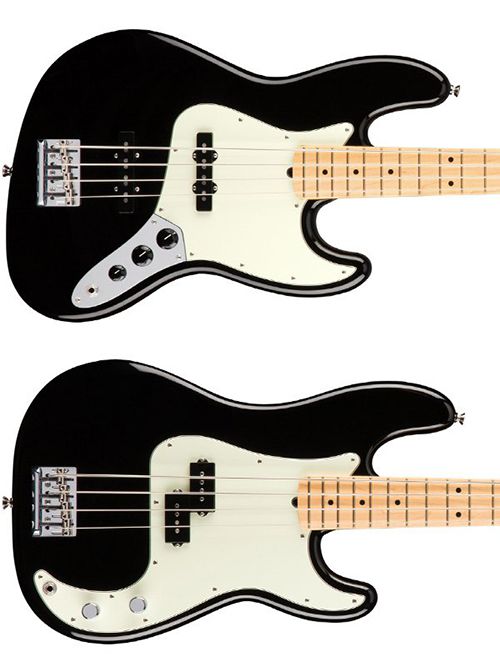
DIFFERENCES IN NECK & NUT SIZE BETWEEN THE JAZZ BASS & P BASS
You instantly understand the difference between the neck of a Jazz and the neck of a 'P' Bass once you’ve played both types.
The first thing you’ll notice is that the thickness towards the nut is different.
These days, most Fender Precision Bass and Jazz bass guitars utilise a modern “C” shaped neck made of Maple. The neck taper is the key difference here.
The Precision bass neck has a larger size towards the nut which is roughly 43mm. This is fairly constant throughout the neck.
In comparison, the Jazz bass differs as it tapers towards the nut and goes down to roughly 38mm. The strings are therefore routed tighter towards the nut end which some players prefer.
In other words, the neck basically gets thinner towards the nut and offers an experience which some bass players find more comfortable. They feel VERY different!
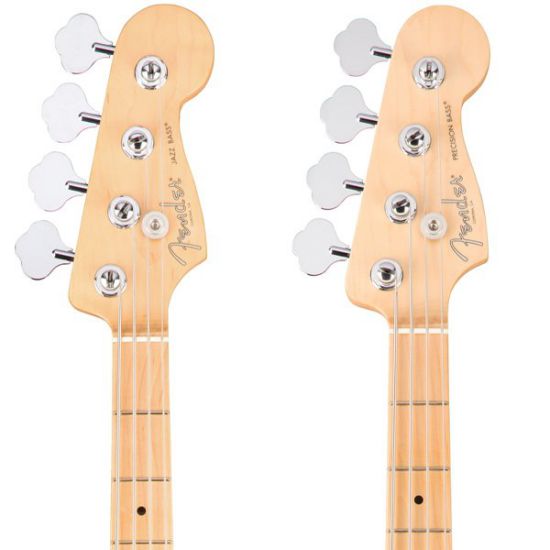
DIFFERENCES IN PICKUPS & ELECTRONICS BETWEEN THE JAZZ BASS & P BASS
When the Precision Bass guitar was first released in 1951, it came with a chrome-plated single-coil pickup.
However, this was changed to a hum-cancelling split-coil pickup in 1957 to deal with the demands of the performing musician.
This pickup had staggered polepieces that helped to deliver a clear high-end that bass guitarists needed, but also deliver the heavy, rich low-end that players of all genres needed.
With this in mind, the 'P' Bass has a single volume and single tone control. The Fender Jazz bass differs as it has two single-coil pickups.
A keen eye will notice that there are two pole pieces per string.
This gives the bass a brighter, treble-heavy sound that Jazz players needed to stick out in the mix.
However, it still retains its healthy midrange grit for when the song calls for it.
Due to the use of dual single-coil pickups, you also have two volume knobs and a master tone circuit.
This allows you to mute one pickup or blend the two to your liking providing a range of different sonic variations.
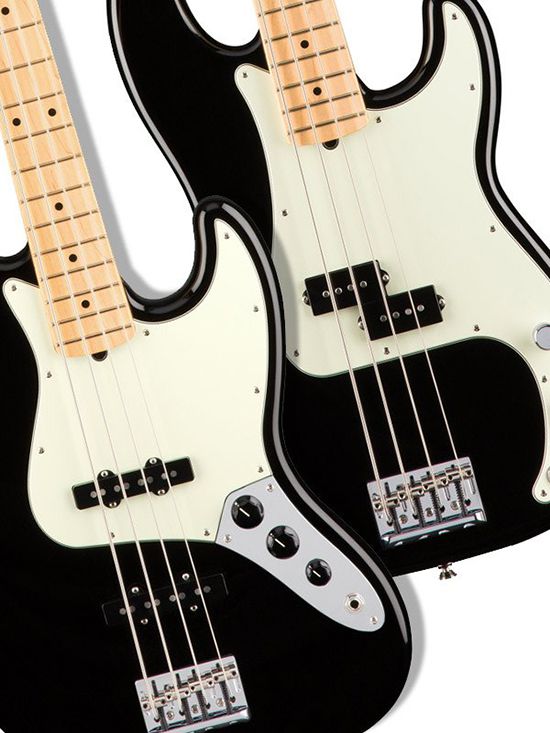
SO WHICH BASS IS THE RIGHT ONE FOR MY SOUND?
Well, this is a tough question to answer because there really isn’t a correct answer! Both the Jazz bass and Fender Precision bass have been used in all genres of music.
Some players prefer the thunderous tones of the P bass, whereas others prefer to be able to blend the Jazz bass pickups in a Smooth Jazz setting.
With that said, some players use the Jazz bass in Black Metal bands and some players prefer the P bass in their Indie Rock bands. It all comes down to personal preference, so we recommend calling into your local PMT store to try them out for yourself!
WHO PLAYS FENDER JAZZ & FENDER PRECISION BASS GUITARS
Here’s a (small) list of Fender bass players to give you a fair idea of what your bass might sound like.
Fender Precision ‘P’ Bass Players:
- Duff McKagan (Guns N' Roses)
- Pete Wentz (Fall Out Boy)
- Geezer Butler (Black Sabbath)
- Mike Dirnt (Green Day)
- Nate Mendel (Foo Fighters)
- James Jamerson
- Brian Wilson (the Beach Boys)
- Carol Kaye (the Wrecking Crew)
- Roger Waters (Pink Floyd)
- Dee Dee Ramone (the Ramones)
- Sting (the Police)
- Brian Foxton (The Jam)
- Paul Simonon (The Clash)
- Steve Harris (Iron Maiden)
- Pino Palladino (The Who, John Mayer Trio)
Fender Jazz Bass players:
- Mark Hoppus (Blink 182)
- Flea (Red Hot Chili Peppers)
- Colin Greenwood (Radiohead)
- John Entwistle (The Who)
- Ron Blair (Tom Petty and the Heartbreakers)
- Adam Clayton (U2)
- Verdine White (Earth, Wind & Fire)
- Noel Redding (The Jimi Hendrix Experience)
- Larry Graham (Sly and the Family Stone)
- Jaco Pastorius (Weather Report)
- John Paul Jones (Led Zeppelin)
- Joe Osborn (The Wrecking Crew, International Submarine Band)
- Geddy Lee (Rush)
- Marcus Miller
Shop a full range of Fender Precision 'P' Bass guitars and Fender Jazz bass guitars over at PMT Online today or call into your local PMT store to try a full range out for yourself.
Updated: 2020-05-29

